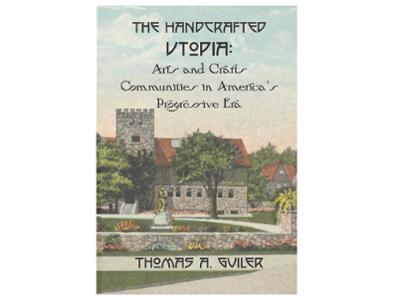Publications
The Handcrafted Utopia: Arts and Crafts Communities in America's Progressive Era
By Thomas A. Guiler
October 1, 2025

Tags American Communal Societies Series
American Communal Societies Series, no. 19. 256 pages, 2025.
ISBN: 978-1-937370-43-5 ($40)
In response to the trauma of industrialization and urbanization in the late-nineteenth century, the Arts and Crafts Movement took America by storm. Art exhibits, workshops, and societies dedicated to handicraft, worker dignity, and the production of beautiful art for the masses sprouted from California to Boston. Ralph Radcliffe Whitehead, Elbert Hubbard, and William Lightfoot Price were so enamored with the movement that they decided to build entirely new worlds—intentional communities—dedicated to pursuing those ideals. Englishman Whitehead founded an art colony named Byrdcliffe in New York’s Catskill Mountains. Hubbard, a former soap salesman, established an Arts and Crafts community business, Roycroft, outside Buffalo, New York. Price, an architect, built the Rose Valley Association outside Philadelphia. They endeavored to reform the economic and social inequalities of industrial capitalism through communal living, artistic development, craft, and the sale of finely crafted furniture, architecture, metalwork, and more. This was what they believed was living “the art that is life.” For these community members, this meant producing and selling art with a social message as well as
living everyday life as if it was a work of art. In imagining a compromise between machine-dominated industry and handicraft, these artisans sought to critique industrial capitalism and carve out a space where craftspeople could once again flourish in community. Rose Valley, Byrdcliffe, and Roycroft were total sensory installations of the Arts and Crafts Movement that stood as community-workshops that were an alternative to brutal industrialization.
Thomas A. Guiler (Ph.D., Syracuse University) is the director of museum affairs at the Oneida Community Mansion House in Oneida, New York. He was assistant professor of history and public humanities at the Winterthur Museum, Garden & Library in Wilmington, Delaware. He also served at the president of the Communal Studies Association. He has published on the history and material culture of intentional communities such as Oneida and of the Arts and Crafts Movement.
